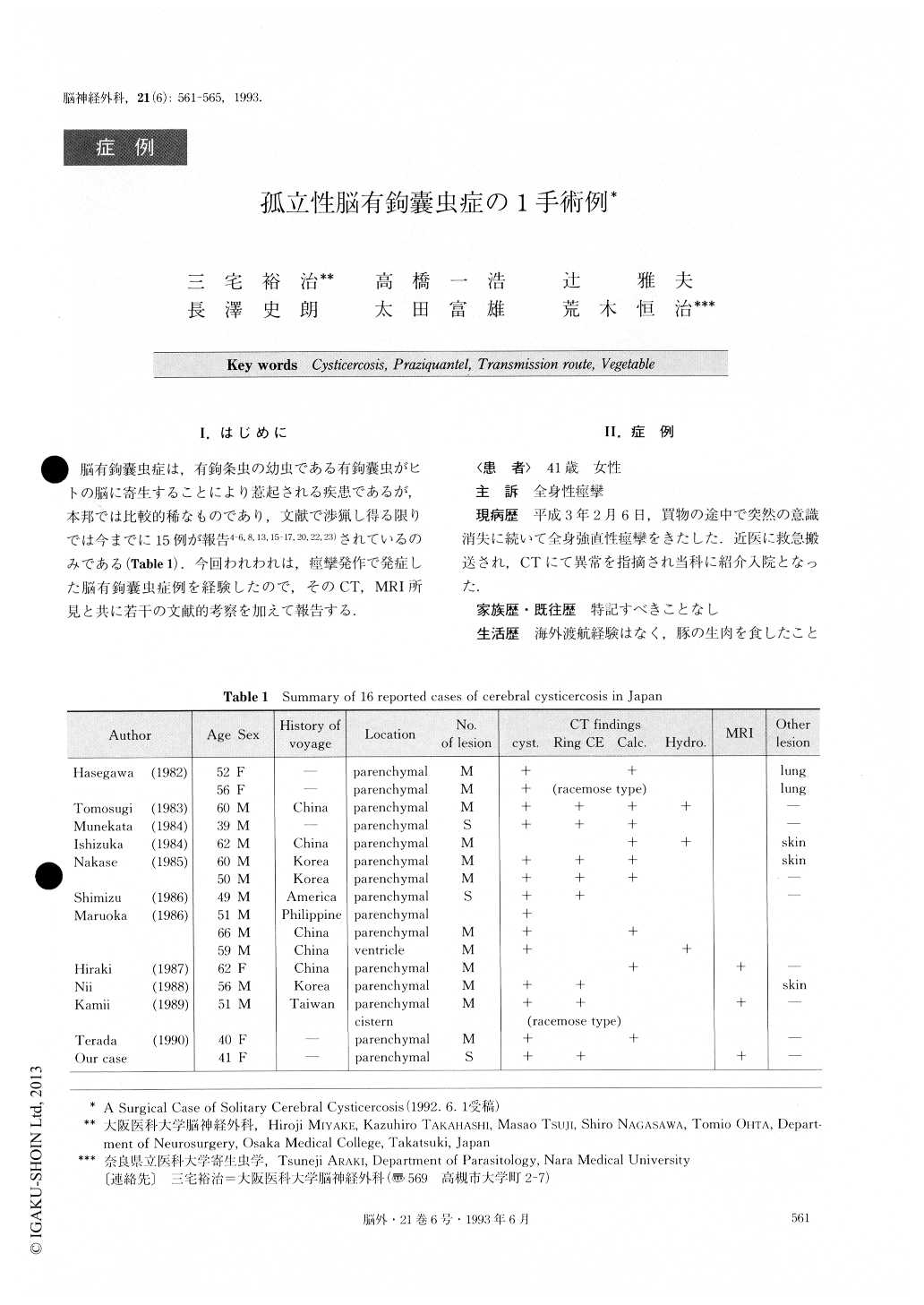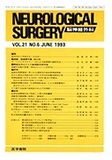Japanese
English
- 有料閲覧
- Abstract 文献概要
- 1ページ目 Look Inside
I.はじめに
脳有鉤嚢虫症は,有鉤条虫の幼虫である有鉤嚢虫がヒトの脳に寄生することにより惹起される疾患であるが,本邦では比較的稀なものであり,文献で渉猟し得る限りでは今までに15例が報告4-6,8,13,15-17,20,22,23)されているのみである(Table 1).今回われわれは,痙攣発作で発症した脳有鉤嚢虫症例を経験したので,そのCT, MRI所見と共に若干の文献的考察を加えて報告する.
A surgical case of solitary cerebral cysticercosis is presented with a review of the literature.
A 41 year-old female was admitted to our institute with generalized convulsion. Physical and neurological findings on admission were unremarkable. CT scan revealed a ring-like enhanced mass with perifocal edema in the right rectal gyrus. On MRI, the cyst wall showed isosignal intensity on T1 weighted image (T1WI) and was markedly enhanced by gadolinium. The cyst fluid showed low signal intensity on T1WI and high signal intensity on T2-weighted image (T2WI). Obvious perifocal edema was seen on T2WI. Laboratory findings were all normal. The mass was totally removed surgically via the right subfrontal route. It was an extraaxial mass and had no attachment to the dura. Histological examination revealed the presence of the scolex, hooklets, and suckers, characteristic of cysticercus. The patient was administered praziquantel at 1200mg/day for 3 days after surgery. In this case, Taenia solium could not be found in spite of various examinations and sexual transmission was also denied after interview. One possibility was transmission via fresh vegetables grown with excretal compost contaminated with the eggs of T. solium, as the patient often ate spicy pickles called Kimuchi imported from Korea. Physicians should be aware of the possibility of transmission via contaminated fresh vegetables in patients who have never even been to an endemic area, or who have never eaten raw pork.

Copyright © 1993, Igaku-Shoin Ltd. All rights reserved.


